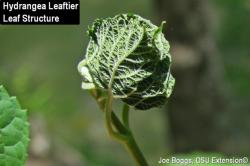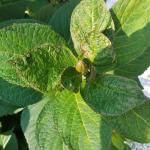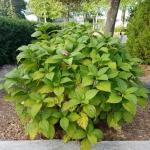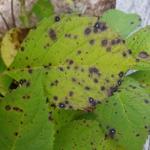A monthly e-newsletter from UMass Extension for landscapers, arborists, and other Green Industry professionals, including monthly tips for home gardeners.
To read individual sections of the message, click on the section headings below to expand the content:
COVID-19 Information for Landscapers, Garden Centers, and Nurseries
During these challenging times, everyone is taking extraordinary measures to help protect the health of ourselves, our families, our employees and our communities.
For resources for Landscapers, Garden Centers, and Nurseries from UMass Extension, go to:
- https://ag.umass.edu/landscape/news/covid-19-information-support-for-landscapers-nurseries-turf-managers-garden-centers
- https://ag.umass.edu/coronavirus
Does Your Pesticide License Recertification Cycle End 7/1/20?
For holders of Massachusetts pesticide licenses whose current three-year retraining or recertification cycle ends in Calendar Year (CY) 2020, the MA Department of Agricultural Resources Pesticide Program has extended the time permitted to earn credits to 12/31/20 as well as the number of computer-based or online credits that are acceptable for these specific individuals. For more details, go to https://www.mass.gov/doc/pesticide-license-recertification-processes-and-related-impacts-from-covid-19/download
Hot Topics
Common Hydrangea Pests
Hydrangea has become one of the most popular ornamental plants of the home landscape. Hydrangea’s popularity has a lot to do with the beautiful flowers, but hydrangea is also seen as relatively easy to care for and has few pests. Though hydrangea is relatively pest free, there are a couple of pests that are seen from time to time and cause an otherwise beautiful plant to be unsightly. We will cover the most common insect and disease pests of hydrangea seen in southeastern MA.
Hydrangea leaftier, Olethreutes ferriferana
The hydrangea leaftier is a caterpillar that affects smooth hydrangea, H. arborescens. The caterpillars are light green with a dark head and cause damage by tying the leaves at the top of branches together using silk-like threads, creating a pocket-like structure with the leaves (Fig. 1). The caterpillar is well protected in the structure and feeds on the young leaves in the bud (Fig. 2). The damage to the plant is primarily aesthetic and is unlikely to impact the health of the plant, though some damage to flowers can occur.
Hydrangea leaftier is easy to control with minimal effort. The caterpillars can be squished by either opening the tied-leaf structures, locating the caterpillar, and squishing or by thoroughly squishing the pockets. The tied together leaf structures may also be removed and destroyed, though this may affect the quantity of blooms if the flower is also removed. The insect is well protected from insecticides inside the leaf pockets and therefore manual control is the best option. Look for the tied together leaves in May and early June.
Chilli thrips, Scirtothrips dorsalis
Chilli thrips is a new insect pest to Massachusetts, documented and confirmed in 2016 from hydrangea on Cape Cod. Thrips are tiny insects (<2mm) pale in color, have piercing sucking mouth parts, and feed on tender growth near the meristems (Fig. 3). The feeding damage causes scarring, distortion of leaves, discoloration of leaves, buds, and flowers (Fig. 4). Damage from chilli thrips typically is first noticed in mid-summer as light scarring on leaves. Damage becomes more severe into late summer and fall. Chilli thrips have been identified causing damage to both bigleaf hydrangea, H. macrophylla, and mountain hydrangea, H. serrata. Anecdotal observations also suggest some cultivars may be more susceptible than others.
The insect is believed to overwinter in the fallen leaves of hydrangea and therefore the primary cultural control recommendation is for diligent winter cleanup of leaves. The behavior of chilli thrips in Massachusetts is still not completely understood and damage has been seen to vary across year, cultivar and even location in the landscape. For more information on chilli thrips, see this fact sheet.
Cercospora Leaf Spot, Cercospora hydrangeae
Cercospora leaf spot can affect all the common ornamental hydrangeas (bigleaf, mountain, oakleaf, panicle and smooth hydrangea); however, it is primarily observed on bigleaf and mountain hydrangea and only occasionally on oak leaf or panicle hydrangea. This disease greatly affects the aesthetic value of the hydrangea and when severe, premature defoliation can significantly reduce vigor (Fig. 5). The disease most often starts as small spots on the lower leaves, then working up the plant (Fig. 6). The spots are small with a reddish/purple halo. As the spots become larger, the center often turns brown then light gray and papery (Fig. 7). As the number of spots increases, the spots coalesce and often cause the leaves to begin yellowing and they may fall off. Typically, first symptoms of the disease appear in June.
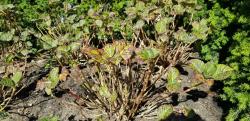 The first step in managing cercospora leaf spot is to make sure when purchasing plants that there is no sign of disease. Seeking resistant cultivars would also be suggested (see Additional Resources below). Cercospora leaf spot spreads primarily with splashing water and wind; therefore, managing leaf wetness is a crucial part of disease management. During rainy summers or on properties using overhead irrigation, disease is noticeably more severe. Drip irrigation is preferred to overhead irrigation in hydrangea plantings. Once symptoms begin to appear, individual leaves with spots can be removed, frequently checking for new leaves with spots. Research suggests that disease symptoms are more severe on hydrangeas planted in full sun and this should be an important consideration when planting. Cercospora leaf spot primarily overwinters on fallen leaves, so diligent cleanup can greatly reduce the initial inoculum the following year. For landscapes with severe defoliation, intervention with fungicides may be necessary.
The first step in managing cercospora leaf spot is to make sure when purchasing plants that there is no sign of disease. Seeking resistant cultivars would also be suggested (see Additional Resources below). Cercospora leaf spot spreads primarily with splashing water and wind; therefore, managing leaf wetness is a crucial part of disease management. During rainy summers or on properties using overhead irrigation, disease is noticeably more severe. Drip irrigation is preferred to overhead irrigation in hydrangea plantings. Once symptoms begin to appear, individual leaves with spots can be removed, frequently checking for new leaves with spots. Research suggests that disease symptoms are more severe on hydrangeas planted in full sun and this should be an important consideration when planting. Cercospora leaf spot primarily overwinters on fallen leaves, so diligent cleanup can greatly reduce the initial inoculum the following year. For landscapes with severe defoliation, intervention with fungicides may be necessary.
Powdery Mildew
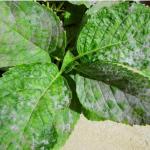 Powdery mildew is well known by most gardeners and seems to affect a nearly endless list of ornamental plants. Interestingly, most powdery mildews are host specific, meaning the powdery mildew that affects your lilac is a different organism than the powdery mildew that affects your phlox. Bigleaf hydrangea appears to be the most susceptible of the hydrangeas to powdery mildew. Powdery mildew typically first shows up in mid-late summer. Initial infections start as white fuzzy growth on the surface of leaves and stems (Fig. 8). The spots may take on a yellowish or sometimes purplish hue. When disease is severe, yellowing and premature defoliation can result. The disease primarily affects the aesthetics of hydrangea.
Powdery mildew is well known by most gardeners and seems to affect a nearly endless list of ornamental plants. Interestingly, most powdery mildews are host specific, meaning the powdery mildew that affects your lilac is a different organism than the powdery mildew that affects your phlox. Bigleaf hydrangea appears to be the most susceptible of the hydrangeas to powdery mildew. Powdery mildew typically first shows up in mid-late summer. Initial infections start as white fuzzy growth on the surface of leaves and stems (Fig. 8). The spots may take on a yellowish or sometimes purplish hue. When disease is severe, yellowing and premature defoliation can result. The disease primarily affects the aesthetics of hydrangea.
Managing powdery mildew is difficult, especially once symptoms have been observed. Powdery mildews, unlike other plant diseases, is able to infect plants under high humidity, whereas most plant diseases require free moisture on the leaf surface to infect. This enables powdery mildew to take advantage of our typical summer weather conditions. The best way to manage powdery mildew is to consider proper placement in the landscape. Ideal placement would include good air flow that allows for rapid of drying of foliage. Plant spacing can also be an important factor; when hydrangeas are planted closely together, air circulation can be an issue, increasing the incidence of powdery mildew. Some bigleaf cultivars are less susceptible to powdery mildew than others; do your research before purchasing.
Although these are not the only pests that can affect hydrangea, these tend to be the ones that are most common in our area. Other pests that may be observed include botrytis, two-spotted spidermite, and four-lined plant bug. Before undergoing any type of pest management, make sure you start off with a correct diagnosis and determine whether the disease can be managed by adjusting your cultural practices. For help with proper diagnosis, consider sending samples to the UMass Plant Diagnostic Lab.
Additional Resources
Mmbaga MT., et. al. (2012) Evaluation of Hydrangea macrophylla for Resistance to Leaf-Spot Diseases. J. Phytopathol 160:88–97
Windham MT., et. al. (2011) Evaluation of Powdery Mildew Resistance in Hydrangea macrophylla. J. Environ. Hort. 29(2):60–64.
Russ Norton, Agriculture & Horticulture Extension Educator, Cape Cod Cooperative Extension
Questions & Answers
Q. Should we add a surfactant to all our herbicide applications?
A. If the product label calls for the addition of a surfactant, then one should be added. Without the surfactant, the product will very likely not perform and reduced efficacy is possible. The addition of a surfactant to a product that doesn’t require one can result in injury to desirable plant species as a result of a loss of herbicide selectively. Many products are formulated with a surfactant as part of the product and a surfactant addition is not required for optimum performance. The distributor where you purchase your product should have the correct surfactant for any product that they sell that needs a surfactant.
Q. Will glyphosate control oriental bittersweet? If not, what herbicide should I be using?
A. Foliar applications of glyphosate will result in leaf yellowing for a short period but regrowth will occur. While the initial symptoms of a foliar glyphosate application might look promising, bittersweet will not be effectively controlled. Products that contain triclopyr are a better postemergence choice as a foliar postemergence application. Glyphosate or triclopyr can be used as a cut stem/cut stump treatment however. Selection of foliar versus cut stem/cut stump treatments will be determined by the growth habit of the oriental bittersweet. In other words, is it growing as a groundcover (low growing brush) or a tree-climbing vine? Oriental bittersweet is a prolific seed producer and seedlings/small plants are common. As part of an ongoing management program, these seedlings/small plants should be pulled by hand as they appear.
Q. Some of our customers have asked us to not use glyphosate on their property. Are there suitable alternatives for glyphosate?
A. While there are other non-selective herbicides being put forth as alternatives to glyphosate, there is not a one-to-one replacement available. Whether they are “suitable” or appropriate depends exclusively on the weed species that is being managed and how it is growing. For more information on glyphosate alternatives, see the article Are There Glyphosate Alternatives? in Hort Notes Issue 31, Volume 2.
Randy Prostak, UMass Amherst Extension Weed Specialist
Trouble Maker of the Month
Keep an Eye Out for Lily Leaf Beetle!
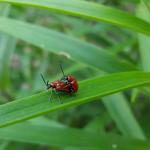 As soon as lilies break through the ground and foliage is available, bright red, overwintered adult lily leaf beetles (Lilioceris lilii) can be seen wandering and feeding on host plant leaves. Mating and egg laying will soon occur, and eggs can usually be found on hosts in May. Host plants include true lilies (Lilium spp.) and fritillaries (Fritillaria spp.). Daylilies (Hemerocallis spp.), however, are not hosts. Adult beetles can fly and do not necessarily overwinter right next to susceptible host plants, so they are capable of dispersing on their own to new plantings or may be carried into new areas on infested host plant material. While lilies and fritillaries are the most significantly impacted, these insects may also be seen on lily of the valley (Convallaria majalis), Soloman's seal (Polygonatum spp.), bittersweet (Solanum spp.), potato (Solanum tuberosum), hollyhock (Alcea spp.) and various hosta species. However, damage to these other plants is typically not significant. Lily leaf beetle is native to Europe and Asia and was first detected in the United States in Cambridge, MA in 1992.
As soon as lilies break through the ground and foliage is available, bright red, overwintered adult lily leaf beetles (Lilioceris lilii) can be seen wandering and feeding on host plant leaves. Mating and egg laying will soon occur, and eggs can usually be found on hosts in May. Host plants include true lilies (Lilium spp.) and fritillaries (Fritillaria spp.). Daylilies (Hemerocallis spp.), however, are not hosts. Adult beetles can fly and do not necessarily overwinter right next to susceptible host plants, so they are capable of dispersing on their own to new plantings or may be carried into new areas on infested host plant material. While lilies and fritillaries are the most significantly impacted, these insects may also be seen on lily of the valley (Convallaria majalis), Soloman's seal (Polygonatum spp.), bittersweet (Solanum spp.), potato (Solanum tuberosum), hollyhock (Alcea spp.) and various hosta species. However, damage to these other plants is typically not significant. Lily leaf beetle is native to Europe and Asia and was first detected in the United States in Cambridge, MA in 1992.
Now is the time to pick off and remove adult beetles from plantings where it is practical to do so. In large plantings where populations of lily leaf beetle are significant and cause great damage, other means of management may be necessary. Reduced risk insecticides containing the active ingredients neem oil or spinosad are labelled for use against leaf beetles, and may be more effective on young, still small larvae. Please note that spinosad is toxic to pollinators until the product dries (for most, this occurs within 3 hours of application), so do not apply these products to plants in bloom. Follow all label instructions for safety and proper use.
If installing new plantings in areas where lily leaf beetle has historically been a problem, the University of Maine has recently conducted studies that indicate that certain lily species limit the survival of lily leaf beetle eggs and larvae. Their researchers report that Asiatic hybrids may be the most susceptible species, while certain Oriental lilies and other hybrids may provide some resistance, including: Lilium henryi ‘Madame Butterfly’, Lilium speciosum ‘Uchida’, and Lilium ‘Black Beauty’.
Finally, researchers at the University of Rhode Island have identified and released parasitoid wasp biological controls that were found to be specific to Lilioceris spp. and approved by the USDA APHIS PPQ for field release. Tetrastichus setifer, Lemophagus errabundus, and Diaparsis jucunda have been a part of release, recovery, establishment, and distribution studies in New England from 1999 – 2016.
For more information about the lily leaf beetle, visit the updated UMass Extension Lily Leaf Beetle fact sheet.
Not sure how to identify the eggs, larvae, or adults of this insect? Only have 3 minutes to learn more? Check out the life cycle of the lily leaf beetle showcased in Episode 2 of InsectXaminer (short video series): https://ag.umass.edu/landscape/education-events/insectxaminer.
Tawny Simisky, Extension Entomologist, UMass Extension Landscape, Nursery, & Urban Forestry Program
Garden Clippings Tips of the Month
May is the time to:
-
Transplant cool season crops. Cool season crops such as brassicas, onions, leeks, and spinach can be transplanted into the garden after hardening off. Transplants grown either indoors or in a greenhouse need a period of time to adjust to outdoor conditions before being planted in the garden. If transplants are planted directly in the garden before they have adjusted to the sun, wind, rain and cool outdoor temperatures, they may not survive the shock or suffer from sun-scald. Once daytime temperatures are consistently above 45ᴼF, transplants should slowly be exposed to outdoor conditions, allowing them to adjust to outdoor environmental conditions. When the transplants are sufficiently hardened-off, plant them in the garden, preferably on a cloudy day. Make sure plants are watered thoroughly after planting and water in with a dilute starter fertilizer solution.
-
Prune spring flowering shrubs AFTER they have finished blooming. Spring flowering shrubs form their flower buds during last summer or early fall of the previous year. Pruning these shrubs before bloom removes flowers buds and reduces the number of flowers this year. These shrubs, including forsythia (Forsythia spp.), rhododendrons and azaleas (Rhododendron spp.), Virginia sweetspire (Itea virginica), mock orange (Philadelphus spp.), ninebark (Physocarpus opulifolius), spring blooming spirea (Spirea prunifolia and S. vanhouttei), lilacs (Syringa spp.) and viburnums (Viburnum spp.), should be pruned after bloom for maximum flower display. When pruning deciduous shrubs, consider overall plant form, light exposure, and plant health. Well pruned shrubs should contain stems of various ages.
-
Cut back any ornamental grasses and perennials you left in place for winter interest or bird feeding. Cutting ornamental grasses back before new growth emerges will make the clumps sturdier. If you wait too long to cut back the old stems and leaves, you’ll likely snip off the tips of new leaves.
-
Mulch landscape plants. Organic mulches provide many benefits, including moisture retention, control of fluctuations in soil temperature, weed suppression, and protection from mechanical damage from line trimmers and lawn mowers. Organic mulches such as bark mulch also look attractive and help with the addition of organic matter to the soil through decomposition. Remove established perennial weeds before mulch is applied. Avoid mulch depths greater than 4 inches and do not allow mulch to contact the base of trees and shrubs.
-
Direct sow seeds of summer vegetables. Some summer vegetables such as beans, corn, cantaloupes, okra, zucchini, watermelon, cucumber, squash and pumpkin can be directly sown in the field at the end of May when there is no longer a risk of frost. Soil temperatures should have warmed adequately for seeds to germinate and transplants to grow well. Use a soil thermometer to check soil temperature. Soil thermometers can be purchased inexpensively from garden centers, garden supply catalogs or online retailers. Garden soil temperatures should be 60⁰F or higher for these crops. Warm season crops perform best if soil temperatures are above 70⁰F. However, direct seeding is not practical for some warm season crops such as tomatoes, peppers and eggplants because these require a long time to produce their first fruit, longer than our New England summers. In addition, the newly emerged seedlings of these crops are very tender and are easily damaged by insects, disease or weeds. Seeds of these crops are started earlier indoors and hardened seedlings are transplanted to the field. This allows an earlier start in the garden, which results in earlier yields.
-
Prepare garden soil for spring planting. Do not work your soil when it is wet. Tilling or digging when the soil is wet will cause it to dry into hard clods. Prepare soil when it has dried enough. To test if your soil is dry enough, take a handful of soil and squeeze it. If the soil crumbles easily when you open your hand, it is ready to be tilled. If it does not crumble, it is too wet. Allow the soil to dry for a few more days and test again before digging. Prepare raised beds in areas where cold soils and poor drainage are a continuing problem. Incorporate generous amounts of organic materials such as compost.
-
Fertilize your lawn. If fertilizing lawn turf in May, apply 3/4 to 1 pound N per 1,000 square feet with a product that contains approximately 50 percent or more slow-release nitrogen. Try to schedule the application prior to a rain or irrigate following application to move the material off the leaf blades. Fertilizer should not contain phosphorus (P) unless a soil test indicates P deficiency. For information on how to get a soil test, visit soiltest.umass.edu.
-
Start weeding. Weeds are easier to remove when they are young and shallow-rooted. Take time to remove weeds in the garden and landscape in May before they start competing with your plants for nutrients and water. If weeds are not removed early, weed infestation can become overwhelming. Removing the weeds early also prevents them from going to seed, which will reduce weed infestations in future seasons. Spread organic mulch around plants and between rows of your garden to control weeds. Use straw, dried grass clippings, or dry leaves collected from last fall.
-
Plant a wide variety of flowering annuals and perennials. Include native plants that will bloom over the entire growing season to attract pollinators and natural enemies to your landscape.
-
Watch for ticks. Ticks are active and it is important to protect yourself with a repellent when working outdoors. Check yourself every day after working outdoors for ticks. If you find one on yourself or a pet, you can send the tick to the UMass Laboratory of Medical Zoology for identification and testing for tick borne pathogens. For details, visit: https://www.tickreport.com/
-
Order plants for curbside pickup from your local garden center. The month of May is the busiest month for garden centers and retail greenhouse operations in this region. During the month of May they have a wide selection of plants and vegetable transplants. By ordering plants from your local garden centers in the month of May, you will get the best selection of plants and service and you will feel good about supporting local businesses.
Geoffrey Njue, UMass Extension Sustainable Landscapes Specialist
Invasive Crane Flies: Tipula paludosa (European crane fly) and Tipula oleracea (common crane fly)
Crane flies are very common insects which resemble large mosquitoes. They are also commonly known as “mosquito hawks”, “mosquito killers”, or “giant mosquitos”. Contrary to many popular beliefs, crane flies are not mosquitoes, even though they are related and belong to the same insect order Diptera, which includes all flies. They belong to the large family Tipulidae, which includes about 15,000 species worldwide and about 1,500 species in North America.
Crane flies are not very close “relatives” of mosquitoes and have a very different biology. Adults of some species might feed on nectar and even contribute to pollination, while the majority have reduced mouthparts, live only a few days, and do not feed. So, adult crane flies, even if they look like a “giant mosquitos”, do not bite, sting or cause any harm to people or animals. “Mosquito hawks or killers” is also an inaccurate name and yet another myth about this group of insects. Adult crane flies do not have strong chewing mouthparts and so cannot be a predator.
For the most part, crane flies are harmless, have no economic significance or are even necessarily beneficial for the ecosystem. For instance, larvae of the native species usually live in wet, even water-logged, areas and can feed on decaying organic matter, contributing to the leaf litter and wood degradation but not causing any harm or damage. However, larvae of two invasive species - European crane flies (T. paludosa) and common or marsh crane flies (T. oleracea) - feed on plants and can be damaging to turfgrass, pasture grass, many vegetables, strawberries, seedlings in nurseries and many other crops. Both species are originally from Europe and are established in our region.
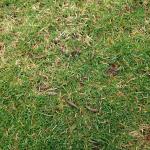 Common crane fly (Tipula oleracea) is a relatively recent introduction. It was first confirmed in Massachusetts in 2009, and populations of this species have since been confirmed throughout southeastern Massachusetts. Moreover, it has recently become more problematic in our region than the European crane fly (Tipula paludosa). Most of the reports are associated with turf injury. However, recently found damage to snapdragon seedlings in a nursery caused by common crane fly larvae has been confirmed. Invasive crane flies are known to be damaging to various crop systems and often reported to be especially damaging to seedlings and young plants. Very wet soils are the key factor for crane fly egg and larvae survival, while host plant has a secondary significance. Recent wet springs in New England are very favorable conditions for crane fly infestations (as more eggs and larvae survive in those wet conditions). It is important to be on the lookout and understand their damaging potential to plants other than turf.
Common crane fly (Tipula oleracea) is a relatively recent introduction. It was first confirmed in Massachusetts in 2009, and populations of this species have since been confirmed throughout southeastern Massachusetts. Moreover, it has recently become more problematic in our region than the European crane fly (Tipula paludosa). Most of the reports are associated with turf injury. However, recently found damage to snapdragon seedlings in a nursery caused by common crane fly larvae has been confirmed. Invasive crane flies are known to be damaging to various crop systems and often reported to be especially damaging to seedlings and young plants. Very wet soils are the key factor for crane fly egg and larvae survival, while host plant has a secondary significance. Recent wet springs in New England are very favorable conditions for crane fly infestations (as more eggs and larvae survive in those wet conditions). It is important to be on the lookout and understand their damaging potential to plants other than turf.
At this time, common crane flies are nearing the end of their development and will be pupating and emerging as adults soon. Watch for adults in a week or two from now (they look like really large mosquitoes). If you spot crane fly adults in early to mid-May, it is most likely to be the common crane fly. Adults of the two invasive species are very similar in appearance (magnification is required to tell them apart), but timing of the adult flight can be a good hint for the species identification. European crane flies have one generation per year. Adults fly in late August to September, and then lay eggs. Larvae can feed through the winter, but most feeding and damage occurs in the spring. During the summer, the larvae do not feed. Common crane flies have two generations per year, with larvae feeding almost all year round and two adult flight periods – one in May and the other in September or October.
It is virtually impossible to identify crane fly species from the larvae. Larvae are wormlike, dark colored with leathery skin, and 1-1.5 inches long. These larvae very often are confused with black cutworms. Take a closer look and see if they have any legs. Caterpillars have legs, crane fly larvae don't; crane fly larvae also have a star-like projection on their tail end and tend to be more mobile, wriggling around in a container much more than a black cutworm caterpillar. If you do see some of these larvae, send us pictures and let us know WHERE you saw them (we are trying to get an idea of how widely spread these crane flies are in southern New England).
Management
Crane fly eggs and larvae survive and thrive in very wet conditions. If irrigation is reduced during late August or September, it can significantly decrease the survival of eggs and larvae (assuming there is not much rainfall during that period), and therefore reduce infestations. This strategy will not be effective in the spring when common crane flies lay eggs, because of the overall wet conditions in the spring.
No insecticide trials have been conducted on common crane fly (T. oleracea), but we assume that the products that have been shown to be effective against the European crane fly (T. paludosa) would work against this species. If you see damage from these larvae, or experience disruption from foraging skunks or raccoons, you can apply an insecticide when you see the adults emerging. That should knock down the population as the young larvae hatch and prepare to feed through the summer. Based on studies conducted by Dan Peck when he was at Cornell University, crane flies are relatively easy to control with insecticides and many options are available including some of the neonicotinoids, pyrethroids, and diamides. Many products have been effective against European crane fly when applied when adults are flying or larvae are just hatching. Some alternative options include nematodes (provide 50 % of control), azadirachtin, and Bt israelensis.
Disclaimer: Mention of an insecticide are for educational purposes only. Make sure that crane flies are on the label of the product you are using. Always follow the label directions for all insecticides used.
Olga Kostromytska, Extension Assistant Professor of Turf Entomology, okostromytsk@umass.edu, and Pat Vittum, Professor Emeritus Turf Entomology
Upcoming Events
Operations at the University of Massachusetts Amherst have been significantly reduced in response to the COVID-19 pandemic and all in-person UMass Extension events scheduled through June have been canceled or postponed. Our professional staff are working remotely to maintain and expand our remote educational services.
Invasive Insect Webinars
Join UMass Extension’s Landscape, Nursery, and Urban Forestry Program and UMass Extension’s Fruit Program for an exciting FREE series of seven webinars focusing on the impact, monitoring, and management of invasive insects in Massachusetts and the nation! Find the registration links in our Events listing at https://ag.umass.edu/landscape/upcoming-events. One pesticide contact hour for categories 29, 35, 36 and Applicators (Core) License is available for each webinar in this series. Webinars are held live noon to 1:00 pm; recordings of the webinars will be archived for later viewing at https://ag.umass.edu/landscape/education-events/invasive-insect-webinars.
- May 21 - Research Updates: Chemical Management of the Spotted Lanternfly
- May 28 - Overview of Spotted Wing Drosophila Monitoring and Management Options
- June 4 - Spotted Lanternfly and Environmental DNA: Insect Monitoring of the Future
- June 9 - Green Industry and Homeowner Response to the Spotted Lanternfly in Pennsylvania
- June 16 - The Invasive Pest Brown Marmorated Stink Bug in Massachusetts: Biology, Monitoring, and Management
- June 23 - Progress towards Controlling the Emerald Ash Borer with Biological Control
- June 30 - Invasive Insects of Trees & Shrubs in Massachusetts: 2020 Updates
Tune in to a TickTalk with TickReport Webinars
This is a FREE live webinar series by Dr. Stephen Rich, Director of the UMass Laboratory of Medical Zoology held noon to 1:00 pm on the 2nd Wednesday of the month. Co-sponsored by UMass Extension and the UMass Laboratory of Medical Zoology.
- June 10 - Tick Management and Control
Dr. Stephen Rich, Professor of Microbiology and Director of the UMass Laboratory of Medical Zoology, and Dr. Kirby Stafford, Chief Scientist at the Connecticut Agricultural Experiment Station and CT State Entomologist, will discuss tick management strategies applicable to landscapes in the Northeast. Dr. Stafford is a medical-veterinary entomologist whose research expertise is on the ecology and control of ticks, especially the black-legged or deer tick (Ixodes scapularis) that transmits several pathogens, including those that cause Lyme disease, human babesiosis, and human ehrlichiosis. Register at https://ag.umass.edu/landscape/education-events/webinars - July-Dec: noon to 1:00 pm on the 2nd Wednesday of the month, topics TBA.
Did you miss the last webinar? Watch past topics of archived webinars at https://ag.umass.edu/landscape/education-events/ticktalk-with-tickreport-webinars.
InsectXaminer!
This new short video series hopes to increase the visibility of the beautiful world of insects, even those we consider to be pests in our managed landscapes. Check out Episode 2 on Lily Leaf Beetle (Lilioceris lilii), available at: https://ag.umass.edu/landscape/education-events/insectxaminer
Registration for the following events has been temporarily suspended while we await further guidance regarding public gatherings from public health officials and the University of Massachusetts.
- 7/8 - State Regulations Pertaining to Invasive Plant Management (part A2: Invasive Plant Management Certification Program)
- 8/5 - The Invasive Plant Issue and Invasive Plant Identification (part A3: Invasive Plant Management Certification Program)
- 8/19 - Developing an Invasive Plant Management Program (part B: Invasive Plant Management Certification Program)
- 9/9 - Ornamental Tree & Shrub ID and Insect Walk
- 10/26-12/10 - Green School
For more details for any of these events, go to the UMass Extension Landscape, Nursery, and Urban Forestry Program Upcoming Events Page.
Pesticide Exam Preparation and Recertification Courses
Since it is uncertain when we will be able to offer these workshops in a live setting, we are preparing to convert these workshops to a remote/online format. Contact Natalia Clifton at nclifton@umass.edu directly before you register for these workshops. For more details, go to https://www.umass.edu/pested/training_workshops.
Additional Resources
For detailed reports on growing conditions and pest activity – Check out the Landscape Message
For commercial growers of greenhouse crops and flowers - Check out the New England Greenhouse Update website
For professional turf managers - Check out our Turf Management Updates
For home gardeners and garden retailers - Check out our home lawn and garden resources. UMass Extension also has a Twitter feed that provides timely, daily gardening tips, sunrise and sunset times to home gardeners at twitter.com/UMassGardenClip
Diagnostic Services
Current Massachusetts and University policy have the effect of temporarily suspending most of the on-campus services that we provide, including but not limited to:
- Soil and Plant Nutrient Testing Lab
- Plant Disease Diagnostics Lab
- Weed, Insect, Turfgrass, and Invasive Plant Identification
These services are currently suspended. Until further notice, please do not send or deliver samples to the campus, as we cannot process them.
A UMass Laboratory Diagnoses Landscape and Turf Problems - When normal services resume, the UMass Extension Plant Diagnostic Lab is available to serve commercial landscape contractors, turf managers, arborists, nurseries and other green industry professionals. It provides woody plant and turf disease analysis, woody plant and turf insect identification, turfgrass identification, weed identification, and offers a report of pest management strategies that are research based, economically sound and environmentally appropriate for the situation. Accurate diagnosis for a turf or landscape problem can often eliminate or reduce the need for pesticide use. For sampling procedures, detailed submission instructions and a list of fees, go to Plant Diagnostics Laboratory. No samples are being accepted at this time.
Soil and Plant Nutrient Testing - When normal services resume, the University of Massachusetts Soil and Plant Nutrient Testing Laboratory is located on the campus of The University of Massachusetts at Amherst. Testing services are available to all. The function of the Soil and Plant Nutrient Testing Laboratory is to provide test results and recommendations that lead to the wise and economical use of soils and soil amendments. For complete information, visit the UMass Soil and Plant Nutrient Testing Laboratory web site. Alternatively, call the lab at (413) 545-2311. No samples are being accepted at this time.

